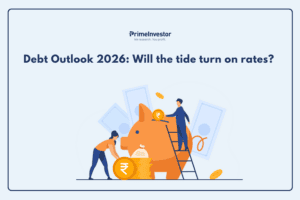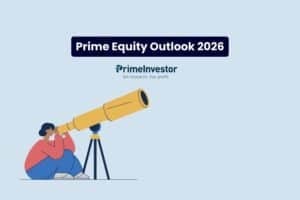In this second part to our review cycle updates, we’re discussing changes we have made in our mutual fund review tool. In this tool, we give our call on funds – buy, sell, or hold. You can use this tool when reviewing your mutual fund portfolio or for funds where you’re curious about what we think of it.
Separately, we have published an article on how to use our review tool and an FAQ of sorts that will answer questions you may have on the mutual fund review tool. We have received several questions on our calls, and we thought putting it together would be a useful reference for you.
In this article, we’re singling out some interesting changes in the buy/sell/hold calls. Do note that this is not an exhaustive list of all fund review changes. Many of you have asked us for rationale behind our calls, and why something is a sell when it’s doing well. So here’s how we give the calls in the MF review tool.
What goes into a fund review call
- Prime Ratings – given that the fund ratings consider multiple quantitative performance metrics, this is the starting point to base our calls. Obviously, funds in the 1 or 1.5 star set, regardless of category, are hardly worth holding on to.
- Nature of funds – the fund’s strategy may be such that a lacklustre performance doesn’t really warrant a sell – like in the case of value funds, for example. We look at both long-term and short-term performance before taking calls.
- Market scenario – in some cases, we take a call based on what debt or equity market conditions are like. For instance, we’d become stricter in terms of credit risk with debt funds at this time. Or, with small-cap funds tanking owing to the market, giving excessive sell calls on funds due to falling returns may not be the best idea.
Therefore, know that it’s not just ratings or just the past few months’ performance that goes into the MF review tool.

In this review cycle, funds haven’t seen any drastic changes in their ratings – the more noteworthy changes are highlighted in our earlier article.
- With fund performance across debt, equity, and hybrid categories more or less stable, we have not made many changes to our fund reviews.
- Equity markets also currently support improving fund performance and we’ve given some underperforming funds a longer line to recoup losses. Other poor performers are also improving, which allows more time to make changes.
- Categories such as dynamic bond, medium to long duration, dynamic asset allocation, equity savings, conservative hybrid and large-and-midcap funds have seen very few changes.
With that, let’s move to some key fund review changes and our reasoning for the same.
Equity funds
HDFC Top 100 – Sell from hold
We had a hold call on HDFC Top 100, since it had held up better in 2019 when large-cap funds were generally struggling and because it had improved performance compared to the Nifty 100 TRI. But the fund has sunk well below the index again. In both 1-year and 3-year periods, the fund has frequently risen past the index and then slipped below it again. This instability in performance does not bode well for a portfolio, even for the long term. On other metrics too, the fund fails to score above average. With better and more stable options in multi-cap funds, index funds, and even other large-cap funds, we moved the fund from a hold to a sell.
We have moved some large-cap funds to a hold from a sell, such as HSBC Large Cap and Invesco India Large Cap. This is owing to their improvement in performance against the index especially in the past few months. If the performance sustains, these funds could continue to help generate a little higher return for portfolios and may not warrant an exit.
IDFC Multicap – Sell from hold
This is another formerly popular fund. But the fund has been fighting to pull back from a poor performance and has been unable to convincingly beat the Nifty 500 TRI and sustain a better performance. Its average returns and other metrics such as risk-adjusted returns don’t hold up when compared to category leaders. The fund’s golden run may therefore not return in the near future and the fund may continue to drag portfolio returns.
Motilal Oswal Multicap 35 – Hold from buy
The concentrated nature of this fund has both helped and hindered it. A few stock calls gone wrong in 2018 had sent the fund well below peers and benchmark, given the higher weights accorded in a focused strategy. The fund then pulled back from this slump, with other metrics such as volatility and risk-adjusted returns also remaining strong. The fund has, however, dropped back down with heavy financial sector weights, and a few other stocks weighing on returns. For this reason, we’ve moved the fund from a buy to a hold, to see if there are any portfolio changes or if performance improves before marking it a buy.
Principal Focused Multicap – Buy from hold
This fund has been picking up from early 2019. Its performance now holds well above peers and the Nifty 500 TRI thanks to calls in pharma, energy and consumption paying off. The fund has also moved up in our ratings, scores above average on factors such as downside containment and volatility. While its longer term performance may not be very good, the steady improvement in performance offers comfort.
Union Multi Cap – Hold from sell
This is not an AMC you’d see or hear about often! But a couple of funds from this AMC are showing better performance and have pulled out of the 1-star to 2-star range that is the norm for funds from this AMC. This fund’s rating has actually gradually risen now to 3 stars and on metrics such as consistency and risk-adjusted returns score similar to behemoths such as ICICI Pru Value Discovery and Franklin India Equity. It could be interesting to watch if this uptick holds and whether it can eventually pose good alternatives to the current top funds.
L&T Emerging Business – Hold from buy
This small-cap fund was once the top in its category. It has now slipped down to 3.5 stars, in part due to other funds overtaking it in performance. The fund’s recent returns have been lagging the category, though they remain better than the smallcap index. But then, most small-cap funds beat the index. With a recent fund manager change, the slip in performance needs to be watched to know if it’s just an adjustment phase. On other metrics such as downside containment the fund is still better than average.
Know that it’s not just ratings or just the past few months’ performance that goes into our buy-sell-hold calls in the mutual fund review tool.
Debt funds
Aditya Birla Sun Life Savings – Buy from hold
Among the very short-duration funds, as we noted in our rating review, low duration and ultra short-term funds were moving up as money market funds slipped as coupon rates dropped in instruments. This ABSL fund moved up a notch in ratings to 4.5 stars. Its portfolio yield is slightly above the average for its peers, as it owns near-term SDLs, and other AAA papers with higher coupons.
Franklin India Savings – Hold with a cap at 10% of portfolio, from buy
This fund also forms part of our Prime Funds and Prime Portfolio list – we’ll let you know what action to take separately. The change in call does not stem from the risks due to the other Franklin funds closing. Nor is it a factor of high credit risk. the fund’s returns hold well above peers even having shifted a large chunk of its portfolio to cash to deal with redemptions. The fund’s portfolio is in CDs and CPs of large corporate, finance houses, and PSUs and T-Bills.
However, the move to cash and severe redemptions (AUM fell by 60% between April and June 2020) have led to concentration in the top holdings. This concentration is in papers of established groups (Kotak Mahindra – 13.1%, Reliance – 11.2%, Hero – 6.1%, Bank of Baroda – 11.6%) and are as such not risky. The farthest maturity date of papers in the portfolio in June 2021. But as a rule we do not prefer funds with concentrated exposure in a very short duration category and do not wish to make exceptions.
For this reason, we’re moving the call from a buy to a hold, and if more than 10% of your overall investment is in this fund, then you can pare holding down to this level. Note that the fund’s performance still remains at the top without any other visible credit risk, save for concentration in papers of large groups.
Franklin Banking & PSU – Sell from hold
We already had a ‘hold and avoid further exposure’ call on this fund, as it was relatively more volatile than its category, took slightly higher credit risk, and was starting to slide on risk-adjusted returns. These factors still hold good and the fund has suffered from a fall in AUM. This apart, on the returns front, there are better banking & PSU funds than this one which form part of our Prime Funds list.
IDFC Corporate Bond – Buy from hold
This fund’s quality portfolio has held it in good stead, allowing it to beat other corporate bond and medium duration funds with a good level of consistency. Its large AUM, at a time when debt funds are seeing outflow pressure, is an additional comfort. The fund’s rating has also moved up in this rating cycle. In the medium-term debt fund space, a high-credit quality portfolio, above average returns, and a portfolio maturity that can allow for both accrual and some gains on rally are not very easy to come by. While its portfolio yield is slightly below similar-rated corporate bond funds, its SDL, gilt and PSU exposure can buttress returns.
Categories such as dynamic bond, medium to long duration, dynamic asset allocation, equity savings, conservative hybrid and large-and-midcap funds have seen very few changes
Hybrid funds
Aditya Birla Sun Life Equity Hybrid 95 – Sell from hold
Aggressive hybrid funds have had a tough time over 2018 and 2019 in containing their declines; in 2018, for example, many of these funds lagged large-cap funds. We changed our call on the ABSL fund because its performance remains subdued. It lags the Nifty 50 Hybrid Composite index by a hefty double-digit margin, and remains behind peers as well. Its aggressive nature of a higher mid-cap allocation has not helped. Aggressive hybrid funds can typically be taken for a shorter-timeframe than the norm for pure equity funds and for lower risk. The ABSL fund is failing to meet these criterion, so we changed the call to a sell.
In the hybrid space, both HDFC Hybrid Equity and ICICI Pru Equity & Debt have moved to a hold from buy. We will be covering about the reason and the performance of these funds in detail in our Prime Funds review, in our next report.
We’d request you to use the mutual fund review tool to check if our call on funds you hold or are interested in has changed. Our aim in this article is to give you an idea of what goes into our review calls and why we give these calls. So next time you wonder why a 5-star fund is a hold at the same time a 2.5 star fund is a hold…route back here!
We’ll be updating our Prime Funds recommended list and publish the reasoning for the same, plus what you should do with your funds, in the next article. This research report will be for subscribers only. Please look out for the same.




8 thoughts on “Quarterly review – Changes in buy/ sell/ hold calls in our fund review tool”
Mam – Though this question is not related to the article, I just wanted to get your opinion. I see L&T Emerging business update in this section which mentions on the fund manager change. S.N.Lahiri was also managing L&T Midcap fund and I am an investor in this fund. Though Prime Ratings havent changed for this fund, I am worried that the fund manager of L&T Midcap manage almost all of the funds in L&T. Will this impact the performance given the huge responsibility of the new fund manager to oversee almost all the funds in AMC. Please let me know your thoughts. Thanks in advance
Hello sir,
L&T Midcap’s performance has not slipped; it still beats peers and category and is able to contain downsides. Unless there’s a performance deterioration, there is no reason to worry about the fund manager changing. As noted in the article as well, in the case of L&T Emerging, it could just be a temporary blip and not a prolonged slump. We have talked about how to deal with fund manager changes here.
Thanks,
Bhavana
Madam – Thanks for your clarification on L&T Midcap. I had another question too. What is your opinion on a fund manager/ a couple of fund managers managing almost all of the funds in the AMC? With so many funds under their ambit, dont you think it will impact the fund performance?
HEllo Sir, as long as they have a process for each fund’s strategy, we would not be too concerned. If the stock picking is too fund manager dependent, there will be an issue, either which way. There are fund houses with mutliple fund managers whose performance suffers to0 🙂 thanks, Vidya
Thank you mam. As a suggestion for this thread, I would recommend an email alert to the subscriber if the analysts respond to queries. Else, we will have to come back again and again to see if the answer is received. This case, you had responded in less than 2 mins and I missed to see the response. Can you please take this suggestion to your IT team?
Hello sir,
Thanks for pointing this out. We are looking into sorting it out. You should be able to get the option to receive alerts on responses once done.
Regards,
Bhavana
How is HDFC Top 100 fund different from Nifty 100 TRI? Why is it having inferior performance? Just interested to know. It was perceived almost like an index fund many years back, before the real index funds came into being.
The sector and stock weights are significantly different. Foe eg. the fund is significantly underweight defensives such as consuemr goods or IT and overweight cyclicals at most times. It was earlier called Top 200, benchmarked against a larger universe. Naturally, muchof what ir held were from the 200 universe but with very different weights. Now the universe is restricted. Thanks, Vidya
Comments are closed.